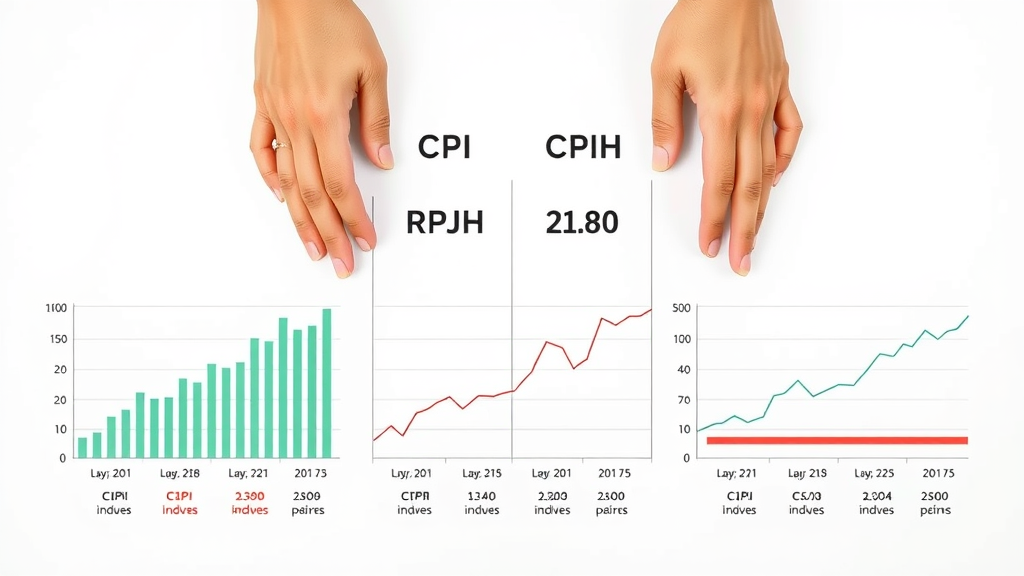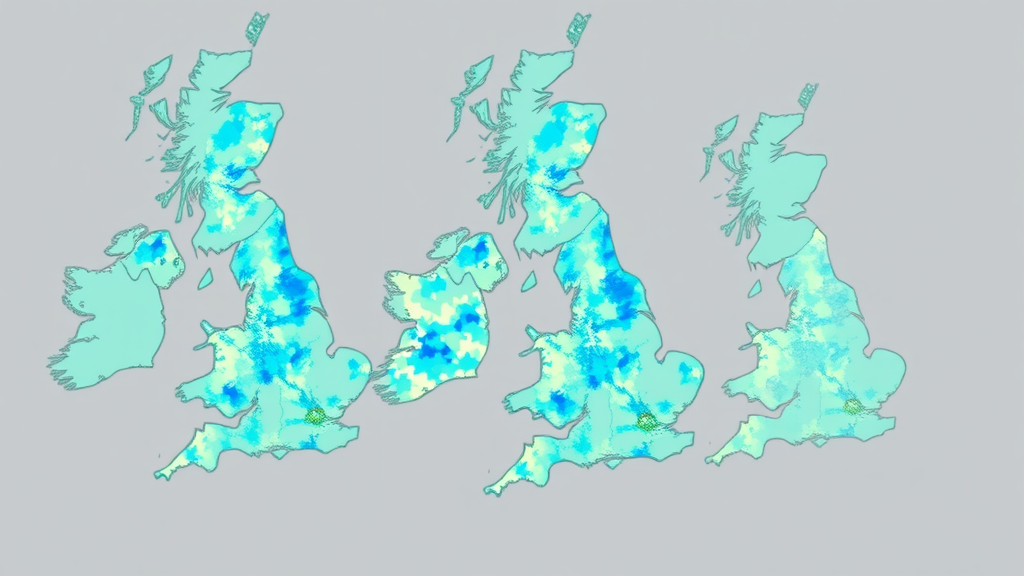Discover how index-linked rent review UK clauses can transform UK private tenancy agreements by offering predictability and fairness in rent adjustments. Learn from expert Ken Johnstone on the growing importance of these clauses in balancing landlord income and tenant affordability amidst evolving market conditions.
Introduction to Index-Linked Rent Review UK Clauses

-
Definition and purpose of index-linked rent review clauses in Assured Shorthold Tenancy (AST) agreements
-
Importance of predictable rent adjustments in the UK private rental market’s dynamic landscape
-
Ken Johnstone, Senior Partner at Johnstone Consulting LLP, explains the growing relevance of these clauses for both landlords and tenants
Index-linked rent review clauses have become an essential feature of UK private tenancy agreements , particularly within the framework of Assured Shorthold Tenancies (ASTs). These clauses tie rent increases directly to economic inflation indices, ensuring that rent adjustments reflect broader market realities rather than arbitrary or contentious negotiations. The core advantage lies in providing landlords with a way to maintain the real value of rental income while offering tenants transparency and predictability, fostering trust and stability.
Understanding the Principle of Index-Linked Rent Review UK Clauses

-
How rent increases are linked to inflation indices such as CPI, CPIH, RPI, and PIPR
-
Comparison with traditional rent review methods highlighting differences
-
Benefits of transparency and predictability to safeguard interests of landlords and tenants
An index-linked rent review UK clause specifies that rent adjustments occur at predetermined intervals, usually annually, based on the percentage change of a selected inflation index. This formulaic approach contrasts with conventional methods, where rent hikes are fixed or market-driven, often leading to disputes. By tying rent directly to a respected inflation measure, both landlords and tenants benefit from an objective and transparent system that reduces uncertainty and potential conflict.
As Ken Johnstone explains, " Index-linked clauses provide a fair mechanism that balances landlords’ need to maintain rental income with tenants’ desire for predictable costs. "
This balance is particularly critical given fluctuations in local housing markets and inflationary pressures affecting both parties.
Expert Insight: The Balance Between Landlord Income and Tenant Affordability
Ken Johnstone of Johnstone Consulting LLP notes, "Index-linked clauses provide a fair mechanism that balances landlords’ need to maintain rental income with tenants’ desire for predictable costs."

Evaluating Inflation Indices for Index-Linked Rent Review UK Clauses
Consumer Prices Index (CPI)
-
Widely recognized and stable inflation measure favored by Bank of England
-
Excludes housing costs , which may disconnect rent increases from actual rental market expenses
-
Tends to produce lower rent increases compared to other indices

The Consumer Prices Index (CPI) is the primary inflation gauge published monthly by the UK Office for National Statistics (ONS). It reflects price changes across a basket of goods and services but notably excludes housing-related costs such as rent or mortgage interest. This characteristic means rent adjustments based on CPI might sometimes feel misaligned with actual rental market trends, especially in high-demand areas.
While CPI offers reliability and widespread recognition, landlords may find its exclusion of housing costs a disadvantage as the increases may not fully cover rising property-related expenses. However, tenants might appreciate CPI-based rent reviews for their relative stability and alignment with general living cost inflation.
Consumer Prices Index Including Owner-Occupiers’ Housing Costs (CPIH)
-
Includes housing expenses for a more comprehensive inflation measure
-
Officially preferred by the ONS but less familiar to tenants
-
Does not account directly for private rental price changes
CPIH extends the CPI by adding owner-occupiers’ housing costs such as mortgage interest and council tax, offering a more holistic reflection of household expenses. Officially endorsed by the ONS , CPIH’s broader scope can better mirror tenants’ economic realities than CPI alone. However, its complexity and exclusion of direct rental price data may cause confusion and somewhat limit its applicability for rent review clauses aiming to track rental market movements precisely.
Retail Prices Index (RPI)
-
Historically results in higher inflation rates favouring landlords’ income maintenance
-
Contains methodological issues leading to classification as a non-official statistic
-
Greater volatility and sometimes perceived as unfair by tenants

RPI, an older inflation measure that includes housing costs, often yields higher rent increases compared to CPI or CPIH, which can make it attractive to landlords. However, due to calculation flaws and its volatile nature, it is subject to criticism and deemed less reliable by official bodies. Tenants may view RPI-based hikes as excessive or unpredictable, risking strained relationships and disputes.
Price Index of Private Rents (PIPR)
-
Measures changes in private rental prices directly , offering unmatched relevance for rent review clauses
-
Provides granular regional data, enabling tailored rent adjustments
-
Less familiar but enhances transparency and reduces disagreement

Price Index of Private Rents (PIPR) is a specialised index published by the ONS that tracks the actual changes in private rental prices across the UK. This makes it uniquely relevant for landlords and tenants seeking rent review clauses that reflect true rental market conditions. PIPR's regional breakdowns help customise increases based on local demand and supply dynamics, offering fairness and enhanced communication transparency.
While its recent introduction means tenants (and agents) may need education on PIPR, its advantages in direct market alignment and dispute reduction make it the most promising index among those evaluated.
Additional Factors Influencing Index-Linked Rent Review UK Clauses

-
Market dynamics and regional rental demand variations influence appropriate index choice
-
Tenant affordability and relationship to wage growth must guide rent increase limits
-
Compliance with regulatory frameworks, including rent caps and upcoming legal reforms
-
Administrative simplicity and tenant communication clarity benefit all parties
-
Suitability for long-term versus short-term tenancy contracts
Beyond selecting a suitable inflation index, landlords and tenants must consider broader market and regulatory factors affecting the usefulness and fairness of index-linked rent review UK clauses. The UK’s rental market varies dramatically by region, with hotspots like London demanding nuanced approaches. Tenant financial resilience, evolving legislation such as rent caps and the Renters’ Rights Bill, and tenancy duration also shape how these clauses should be constructed and applied to ensure sustainable and enforceable arrangements.
Expert Recommendations on Choosing the Best Index for Index-Linked Rent Review UK Clauses

-
Ken Johnstone recommends PIPR due to its direct rental market relevance and regional data sensitivity
-
Clause drafting must include clear terms about the chosen index, review frequency, and any caps or floors
-
Transparent communication with tenants helps foster trust and minimize disputes
According to Ken Johnstone , "Adopting PIPR-linked rent review clauses represents a forward-thinking approach aligning rent adjustments with real market conditions, benefiting landlords and tenants alike."
Clarity in drafting the clause and communicating its implications to tenants upfront is fundamental to its success, ensuring all parties understand the mechanism and rationale behind rent changes.
Common Misconceptions and Challenges with Index-Linked Rent Review UK Clauses

-
Misunderstandings about inflation indices’ impact on rent amounts
-
Concerns over volatility and the potential burden on tenant affordability
-
Potential disputes, especially when less familiar indices like PIPR are used
One of the key hurdles in implementing index-linked rent review UK clauses is overcoming misconceptions. Tenants may be unfamiliar with differing inflation measures and worry about unpredictable or steep rent rises. Landlords need to educate tenants clearly and address affordability concerns to prevent disputes. Careful clause design that includes caps or floors can help mitigate fears and create balanced agreements.
Actionable Tips for Implementing Index-Linked Rent Review UK Clauses

-
Draft clear, detailed clauses specifying the chosen inflation index and review terms
-
Incorporate caps or floors to shield both parties from extreme fluctuations
-
Educate tenants at the tenancy start about how the index functions and affects rent
-
Regularly review market conditions and adjust terms for relevance and fairness
Effective implementation of index-linked rent review UK clauses relies on precision in drafting and open tenant communication. Landlords should ensure clauses specify the selected index, frequency of increase, and any limits to changes such as maximum percentage caps or minimum floors. Tenant briefing sessions at lease signing can facilitate understanding and acceptance, further reducing potential conflict.
People Also Ask: Common Questions on Index-Linked Rent Review UK Clauses

-
What is an index-linked rent review clause?
An index-linked rent review clause adjusts rent annually based on an agreed inflation index to ensure fair and predictable increases. -
Which inflation index is best for rent reviews in the UK?
PIPR is often recommended due to its direct reflection of private rental market trends and regional specificity. -
How do index-linked rent increases affect tenant affordability?
They provide transparent adjustments but must be balanced against tenants’ wage growth and financial capacity. -
Are there legal restrictions on rent increases in the UK?
Yes, including rent caps in some regions and proposed reforms under the Renters’ Rights Bill. -
How often can rent be increased under an index-linked clause?
Typically annually, but the specific frequency must be clearly stated in the tenancy agreement.
Key Takeaways on Index-Linked Rent Review UK Clauses
-
Index-linked clauses provide transparency and predictability , fostering confidence in rent adjustments.
-
PIPR stands out as the preferred index for its direct relevance to the private rental market and regional sensitivity.
-
Landlords must carefully balance rent increases with tenant affordability and regulatory compliance .
-
Clear communication and well-drafted clauses reduce disputes and build positive landlord-tenant relationships.
Conclusion: The Future of Index-Linked Rent Review UK Clauses

Ken Johnstone concludes, "Adopting PIPR-linked rent review clauses represents a forward-thinking approach that aligns rent adjustments with real market conditions, benefiting both landlords and tenants in the evolving UK rental landscape."
In summary, index-linked rent review UK clauses represent a sophisticated evolution in tenancy agreements, reflecting the UK’s complex rental market and shifting economic conditions. By selecting appropriate indices—most notably PIPR—and ensuring transparent, fair implementation, landlords and tenants can achieve sustainable rent growth and positive, long-term rental relationships.
We'd Love to See Your Comments on This
Share your experiences or questions about index-linked rent review UK clauses below to continue the conversation and improve understanding across the rental community.
Summary:
Index-linked rent review clauses are integral to UK private tenancy agreements, offering a structured approach to rent adjustments by tying them to specific economic indices. This method ensures that rent changes are transparent and predictable, benefiting both landlords and tenants.
Understanding Index-Linked Rent Review Clauses
An index-linked rent review clause stipulates that rent will be adjusted periodically based on the movement of a chosen inflation index. Common indices include the Retail Prices Index (RPI) and the Consumer Prices Index (CPI). The primary advantage of this approach is the elimination of subjective negotiations, as rent adjustments are determined by a clear, mathematical formula. This transparency reduces potential disputes and aligns rent changes with broader economic conditions.
Choosing the Appropriate Inflation Index
Selecting the right inflation index is crucial:
-
Retail Prices Index (RPI): Historically, RPI has been favored by landlords because it often reflects higher inflation rates compared to CPI. However, it’s important to note that RPI is no longer an official UK statistic and is set to be phased out by 2030. Despite this, RPI-linked rent reviews offer certain Stamp Duty Land Tax (SDLT) advantages. Specifically, increases due to RPI-linked reviews within the first five years of a lease are disregarded for SDLT purposes, potentially resulting in tax savings for tenants. ( taylorwessing.com )
-
Consumer Prices Index (CPI): CPI is the UK’s official measure of inflation and generally records lower inflation rates than RPI. While it provides a more stable measure, it’s essential to consider that CPI-linked rent reviews within the first five years of a lease can have SDLT implications. Unlike RPI, increases due to CPI-linked reviews are not disregarded, potentially leading to additional SDLT liabilities. ( cgprofessional.co.uk )
Drafting Effective Index-Linked Rent Review Clauses
When incorporating index-linked rent review clauses into tenancy agreements, consider the following:
-
Clarity in Formula: Ensure the rent review formula is clearly defined to prevent unintended consequences. For instance, failing to reset the base index value at each review can lead to compounded increases, resulting in disproportionately high rents. ( harperjames.co.uk )
-
Caps and Collars: To protect both parties from extreme fluctuations, consider including a cap (maximum increase) and a collar (minimum increase) in the clause. This approach provides a safety net against volatile inflation rates. ( gateleyplc.com )
-
Alternative Provisions: Given the planned phase-out of RPI by 2030, it’s prudent to include provisions for an alternative index or method for rent reviews to ensure the clause remains effective in the future. ( hamlins.com )
Legal and Tax Implications
Be aware of the legal and tax implications associated with index-linked rent reviews:
-
Stamp Duty Land Tax (SDLT): As mentioned, RPI-linked rent reviews within the first five years of a lease are disregarded for SDLT calculations, whereas CPI-linked reviews are not. This distinction can influence the overall tax liability associated with the lease. ( taylorwessing.com )
-
Regulatory Changes: Stay informed about legislative developments. For example, the proposed English Devolution and Community Empowerment Bill aims to ban upwards-only rent review clauses in new commercial leases, which could impact how rent reviews are structured. ( slaughterandmay.com )
Conclusion
Index-linked rent review clauses offer a systematic and transparent method for adjusting rents in line with economic indicators. By carefully selecting the appropriate inflation index, drafting clear clauses with protective measures like caps and collars, and staying informed about legal and tax implications, landlords and tenants can create fair and sustainable tenancy agreements.
 Add Row
Add Row  Add
Add 





Write A Comment